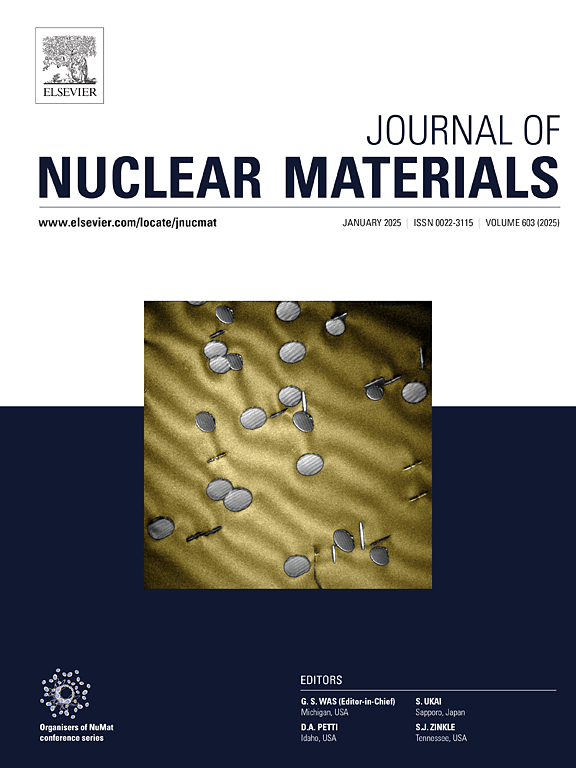X-ray computed tomography of deconsolidated TRISO Particles from the AGR-5/6/7 irradiation experiment capsule 1 Compact
IF 2.8
2区 工程技术
Q3 MATERIALS SCIENCE, MULTIDISCIPLINARY
引用次数: 0
Abstract
X-ray Computed Tomography (XCT) was performed on TRISO particles from fuel Compact 1-7-9 from Capsule 1 of the AGR-5/6/7 irradiation experiment. Compact 1–7–9 was in the vicinity of overheated thermocouples that released transition metals and caused significant damage and failure of TRISO particles within regions of Capsule 1. Four particles, Particles A–D, were non-destructively examined in three-dimensions (3D). Particle B was found to have degraded silicon carbide (SiC) and significant amounts of Ni, actinides, and fission products that contributed to this degradation. The nickel (Ni) showed some evidence of penetration into Particle B from the exterior surface of the silicon carbide layer. The kernels of Particles A, C, and D were analyzed for their size, shape, and observed porosity. A density gradient was observed in the kernels, which may be nascent kernel migration observed in fuel with higher irradiation temperatures. In addition to the kernels, Particles A, C, and D possessed large clusters of dense material that were grouped primarily to one side of the particle located at the buffer/inner pyrolytic carbon interface. These clusters were attributed to nickel migration into the particle interiors, which was confirmed with scanning electron microscopy (SEM) and electron dispersive X-ray spectroscopy (EDS).
求助全文
约1分钟内获得全文
求助全文
来源期刊

Journal of Nuclear Materials
工程技术-材料科学:综合
CiteScore
5.70
自引率
25.80%
发文量
601
审稿时长
63 days
期刊介绍:
The Journal of Nuclear Materials publishes high quality papers in materials research for nuclear applications, primarily fission reactors, fusion reactors, and similar environments including radiation areas of charged particle accelerators. Both original research and critical review papers covering experimental, theoretical, and computational aspects of either fundamental or applied nature are welcome.
The breadth of the field is such that a wide range of processes and properties in the field of materials science and engineering is of interest to the readership, spanning atom-scale processes, microstructures, thermodynamics, mechanical properties, physical properties, and corrosion, for example.
Topics covered by JNM
Fission reactor materials, including fuels, cladding, core structures, pressure vessels, coolant interactions with materials, moderator and control components, fission product behavior.
Materials aspects of the entire fuel cycle.
Materials aspects of the actinides and their compounds.
Performance of nuclear waste materials; materials aspects of the immobilization of wastes.
Fusion reactor materials, including first walls, blankets, insulators and magnets.
Neutron and charged particle radiation effects in materials, including defects, transmutations, microstructures, phase changes and macroscopic properties.
Interaction of plasmas, ion beams, electron beams and electromagnetic radiation with materials relevant to nuclear systems.
 求助内容:
求助内容: 应助结果提醒方式:
应助结果提醒方式:


